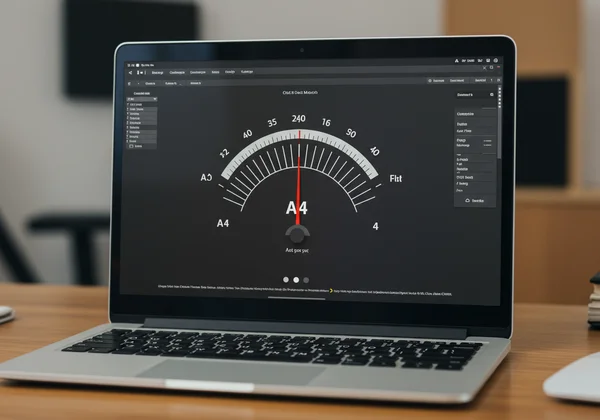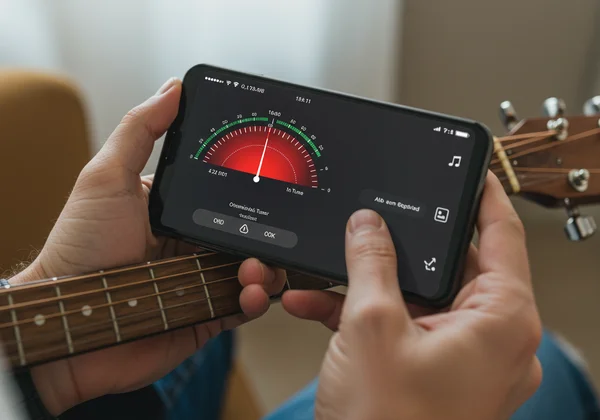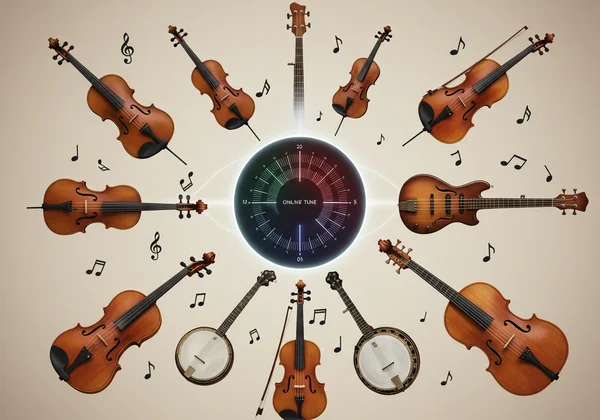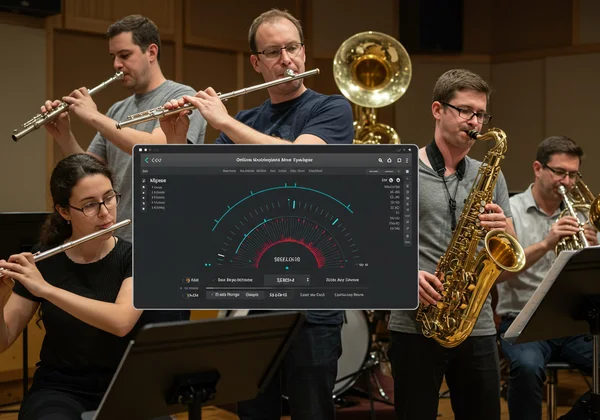Chromatic Tuner: Tune Any Instrument Online with Tuner.wiki
Ever found yourself needing to tune your instrument, only to realize your physical tuner's batteries are dead, or you're missing the right app for a unique instrument? We've all been there. That's precisely why our online chromatic tuner is a game-changer. It's a reliable, free, and incredibly versatile solution for any instrument, anytime, anywhere. But you might be wondering, is an online tuner accurate enough for professional use, or just for quick checks? Let's explore how our chromatic tuner delivers unparalleled precision and convenience for every musician. Ready to experience seamless tuning? You can start tuning today directly on our website.

Understanding Your Online Chromatic Tuner
As a musician, you know that keeping your instrument in tune is essential for a great sound. That's where our powerful online tuning tool comes in.
What is a Chromatic Tuner & How Does It Work?
A chromatic tuner is a sophisticated device or application that can detect and display any pitch, regardless of whether it's a standard note in a particular scale or not. Unlike instrument-specific tuners that only recognize certain notes (like E, A, D, G, B, E for a guitar), a chromatic tuner listens to the sound frequency produced by your instrument. It then compares this frequency to the closest standard musical note (A, A#, B, C, C#, D, D#, E, F, F#, G, G#) and tells you if your note is sharp (too high), flat (too low), or perfectly in tune. This real-time, precise feedback is crucial for achieving perfect intonation.
Why Choose an Online Chromatic Tuner for Versatility?
You'll quickly find the convenience of an online chromatic tuner truly unmatched. Imagine needing to tune a rare instrument or needing a quick check during a rehearsal, without a physical tuner or a specific app installed. Our platform eliminates these hurdles. Our free online tuner operates directly in your web browser – no downloads, no installations, just instant, accurate tuning. It’s accessible from any device—your laptop, tablet, or even your phone—making it the ultimate online instrument tuner for musicians on the go. Its universal compatibility ensures you can tune nearly any instrument that produces a clear, sustained tone. To experience this versatility, visit our tuner.
Step-by-Step: Using Our Online Tool for Any Instrument
Using our online tool is remarkably simple, designed for musicians of all levels. Here's a quick guide on how to use a chromatic tuner on our site:
- Visit our site: Simply open your web browser and navigate to our homepage. The online instrument tuner will be prominently displayed.
- Authorize Microphone: Your browser will prompt you to allow microphone access. Click "Allow" to enable the tuner to listen to your instrument.
- Select Your Instrument (Optional): While the chromatic tuner works for all instruments, you can select specific instrument presets (like guitar tuner or ukulele tuner) if available for standard tunings.
- Play a Single Note: Hold your instrument up to your device's microphone and play a single, clear note. For string instruments, pluck one string. For wind instruments, blow a sustained note.
- Interpret Feedback: The tuner interface will show you the detected note, along with visual cues (like a needle or color changes) indicating whether the pitch is sharp, flat, or spot on.
- Adjust and Repeat: Make small adjustments to your instrument's tuning pegs or other components based on the feedback. Repeat playing the note and adjusting until the tuner indicates perfect pitch.
For a hassle-free tuning experience, simply start tuning now.

Tuning String Instruments Beyond Guitar & Ukulele
While many musicians might first think of a guitar tuner or ukulele tuner, the chromatic tuner excels with a much broader range of stringed instruments.
Mastering Violin & Cello Tuning with Precision
String orchestras and classical musicians demand exceptional precision. Our online instrument tuner provides the accuracy needed for instruments like the violin and cello. For violinists, standard tuning is G-D-A-E. Cellists typically tune to C-G-D-A. Using our precise online tool, you can pluck each string individually, watching the visual feedback to make minute adjustments. The sensitivity of our microphone tuner helps you achieve the perfect pitch, ensuring your ensemble playing is harmonious. This precision makes our platform an indispensable violin tuner and cello tuner.
Tuning Mandolin, Banjo, & Other Folk Stringed Instruments
Beyond the classical realm, folk and traditional musicians often play instruments with unique tunings. Need to tune mandolin to G-D-A-E, or perhaps a different open tuning for your banjo? Our chromatic tuner handles them all. Whether you're trying to tune banjo to an open G or navigate the various tunings of a bouzouki, the general pitch detection of the tuner makes it simple. Just play the note, and the tuner will tell you where it stands. This adaptability makes it the ideal companion for exploring diverse musical traditions. Explore more about tuning diverse instruments by visiting our online tuner.

Tips for Fretless Instruments and Bass Guitars
Fretless instruments like the fretless bass or upright bass require a different approach to intonation, as there are no frets to guide your finger placement. Similarly, bass tuner functionality needs to be highly responsive to low frequencies. Our online instrument tuner can accurately detect the lower frequencies of a bass guitar or double bass. When tuning fretless instruments, use the tuner as a guide for your ear training. Play the note, check the tuner, then adjust your finger placement slightly to achieve perfect pitch. This combination of visual feedback and auditory awareness is key.
Applying the Chromatic Tuner to Wind Instruments
The versatility of the chromatic tuner isn't limited to strings. Wind instrument players can also benefit immensely from its accuracy.
Tuning Woodwind Instruments (Flute, Clarinet, Saxophone)
Woodwind instruments like flutes, clarinets, and saxophones require careful tuning, often adjusted by pulling out or pushing in parts of the instrument (like the headjoint or barrel). Our microphone tuner provides instant visual feedback, showing you if your note is sharp or flat. For example, if your flute is consistently sharp, you might need to pull the headjoint out slightly. For clarinetists, barrel length adjustments are common. The online tuner helps you dial in these subtle changes quickly and accurately, ensuring you blend perfectly in any musical setting.
Tuning Brass Instruments (Trumpet, Trombone, Tuba)
Brass instruments, including trumpets, trombones, and tubas, are typically tuned by adjusting tuning slides. The ambient temperature also plays a significant role in their pitch. The online instrument tuner on our website can precisely detect the notes played by brass instruments, allowing musicians to make the necessary slide adjustments. Whether it's fine-tuning a trumpet's main slide or ensuring the trombone's slide positions are accurate, our chromatic tuner offers the visual guidance you need for perfect intonation. It's a reliable tool for quick adjustments during practice or before a performance.

Unlock Your Instrument's Perfect Pitch with Our Online Tuner
Achieving perfect pitch for any instrument doesn't have to be complicated or costly. Our platform offers a powerful, accurate, and completely free online tuner that stands ready to assist you. From the subtle nuances of a violin to the robust tones of a tuba, our chromatic tuner provides the versatility and precision modern musicians demand. Say goodbye to dead batteries and lost physical tuners. With our online tool, a reliable tuning solution is always just a click away, making it easier than ever to tune with confidence and play with passion. Ready to transform your musical practice? Tune your instrument now!
Frequently Asked Questions About Chromatic Tuners
Navigating the world of instrument tuning can sometimes bring up questions. Here are some common queries about using online chromatic tuner tools.
Is an online chromatic tuner as accurate as a physical one?
Yes, an online chromatic tuner like ours can be remarkably accurate, often comparable to dedicated physical tuners. The accuracy largely depends on the quality of your device's microphone and the quietness of your environment. Our online tuner utilizes advanced algorithms to precisely analyze audio frequencies, providing highly reliable results. For the best accuracy, use it in a quiet room and ensure your microphone is clear of obstructions. Ready for precise tuning? Explore the tuner and see for yourself.
Can I use this online tuner to tune my [specific instrument like oboe/sitar]?
Absolutely! Our online instrument tuner is designed to work with virtually any instrument that produces a clear, sustained pitch. This includes not only common instruments like the guitar and violin but also less common ones such as the oboe, sitar, harmonica, or even ethnic flutes. The universal pitch detection of the chromatic tuner means it doesn't rely on pre-programmed instrument-specific tunings but rather on the raw frequency of the sound. Just play a note, and the tuner will tell you its exact pitch.
What should I do if my instrument doesn't seem to hold its tuning?
If your instrument frequently goes out of tune, even after using a precise online tuner, several factors could be at play. New strings often stretch and require frequent re-tuning. Environmental changes, like temperature and humidity fluctuations, can also cause wood and metal components to expand or contract, affecting pitch. For stringed instruments, worn tuning pegs or bridge issues might be responsible. Consider checking your instrument's general maintenance and string age.
How does ambient noise affect online chromatic tuner accuracy?
Ambient noise can significantly impact the accuracy of any microphone tuner, including online versions. Background sounds, conversations, or other instruments can interfere with the microphone's ability to isolate your instrument's specific pitch. To ensure the most accurate reading, always try to tune in a quiet environment. Using headphones with a built-in microphone can also help by isolating your sound more effectively. For optimal results, close unnecessary applications and ensure a calm space when you tune your instrument.